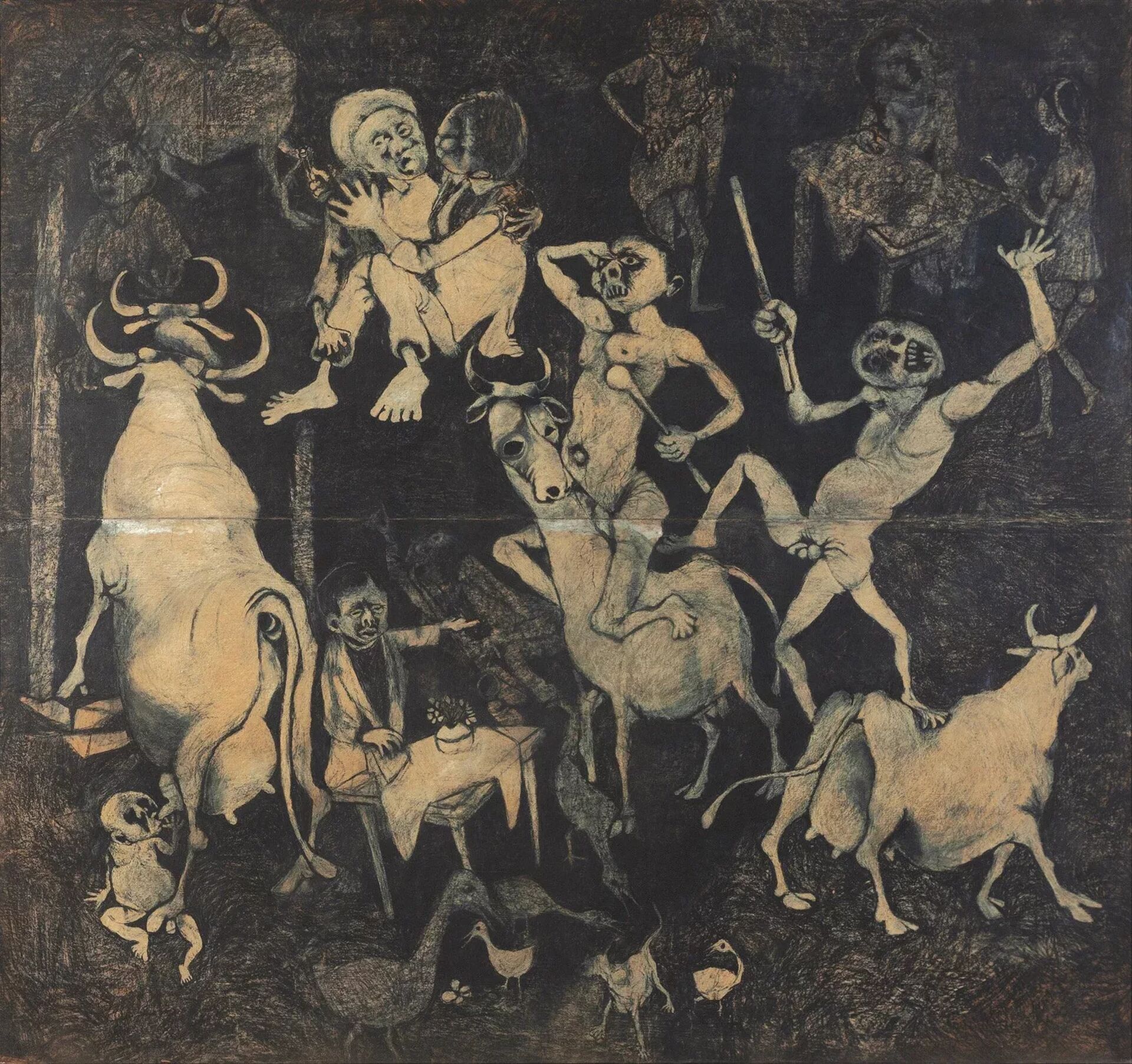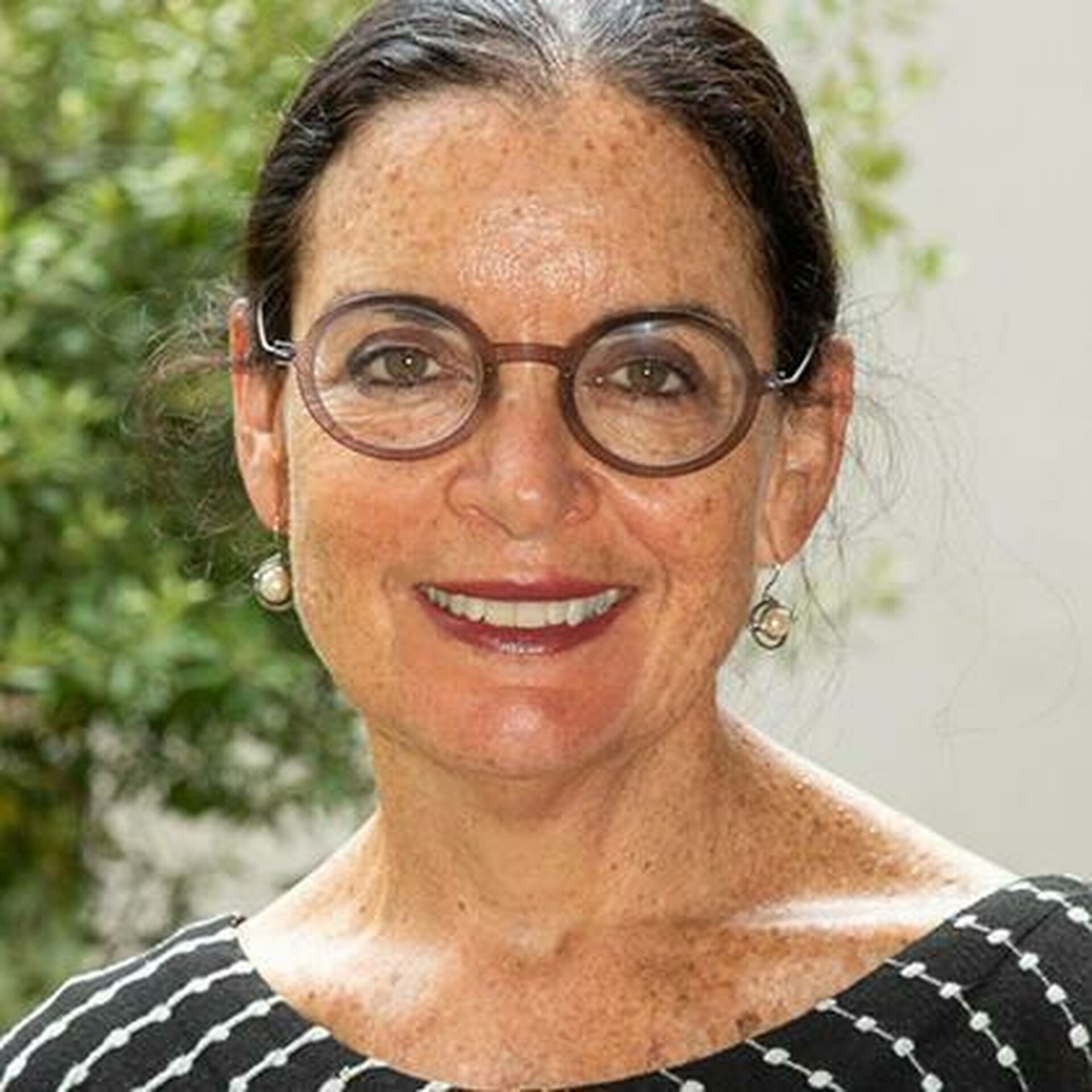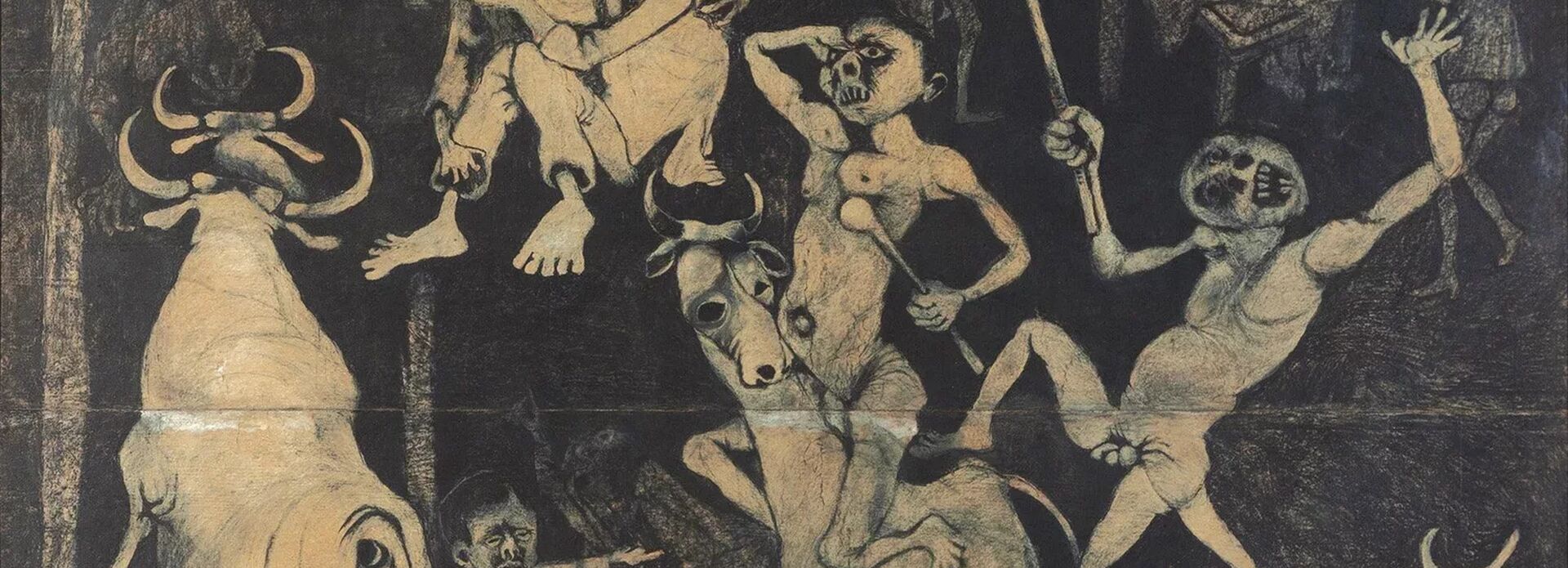This Tessin-lecture will place the South African artist Dumile Feni’s monumental drawing African Guernica from 1967 alongside Picasso’s famous painting executed in 1937 and discuss the relationship between them. The lecture will be held in English.
Date and time
Friday 7 November, 15:30–16:30
Admission
Free
Tickets
Book your free ticket in advance, limited number of seats
Language
English
Location
The South courtyard, ground floor

Dumile Feni, African Guernica, University of Fort Hare. Photo courtesy of University of Fort Hare. © Dumile Feni Family Trust 2021.
About the artworks
The South African artist Dumile Feni made a monumental drawing, the African Guernica in 1967 in the context of Johannesburg, a city that was spatially and socially segregated under Apartheid law. By this time Picasso’s Guernica was a highly contested and much reproduced object globally. Executed in 1937 to memorialise the bombing of the Basque town by the Germans at the behest of Colonel Franco, it was first shown in the Spanish Pavillion at the Exposition Universelle in Paris in that year. Thereafter it travelled extensively but not without controversy. Notably it came to Stockholm in 1956 (in a tour which included Amsterdam and Brussels) alongside preparatory studies, where it provoked the ire of the Spanish ambassador who saw it as a tool of propaganda against Spain, still under the rule of Franco.
Becoming a totem of pacifist protest and anti-totalitarian activism, Guernica also became the focus of aesthetic debates and contestation globally. Unsurprisingly, it was widely known in South Africa via reproduction where it, and the pictorial rhetoric it embodied, tapped into local debates about realism, surrealism, abstraction and the relationship between art, politics and humanist aesthetics.
Dumile Feni, a self-taught artist working in drawing and sculpture, made many huge drawings in the 1960s, arguably larger and more ambitious than any other works on paper made at the time. Conceived as finished works rather than preparatory or provisional drawings, Dumile’s works aspire to the scale and ambition of history paintings or murals, much like Picasso’s Guernica. Little known in Europe where his African Guernica has never been shown, Dumile is a towering figure in relation to African Modernism in general and South African twentieth century art in particular.
Next year, African Guernica will be brought to Europe for the first time, where it will be shown alongside Picasso's Guernica at the Museo Reina Sofía in Madrid, in an exploratory juxtaposition that will look at the synergies and similarities as well as the differences and tensions that seeing them alongside one another will raise. the exhibition will be curated by Tamar Garb.
About the lecture
This lecture will discuss the relationship between them. It will also raise the question what we do make of a twentieth century African artist’s appropriation of a European work and a title which is itself so aesthetically and politically overdetermined. How are African and European Modernisms entangled beyond the now standard debates around primitivism and precedence? By doing so, we will explore the legacies of European Modernism, themselves indebted to ‘Africa’, while centering African based practices in an art history that is both global and inclusive.

Tamar Garb. Private photo.
About Tamar Garb
Tamar Garb is Durning Lawrence Professor in History of Art at University College London. Her research has focused on women’s art practices and questions of gender and sexuality in European art as well as on post-apartheid culture, contemporary art and the history of painting and photography in Africa.She is currently curating a show at Museo Reina Sofia, Madrid, which will bring Dumeli Feni’s African Guernica (1967) to hang alongside Picasso’s Guernica. This show is scheduled to open in March 2026.
The Tessin Lecture
Once a year the Nationalmuseum, Stockholm, invites a prominent international scholar to give a lecture in art history. The lecture, which is public, is a way to pay tribute to an exceptional scholar in art history and emphasize the museum’s commitment to research.
Book your free ticket